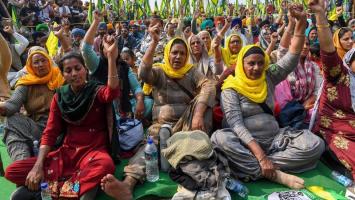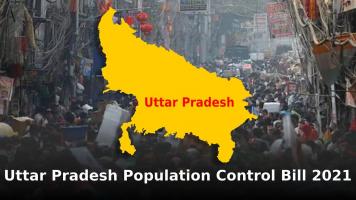Water as we know, is the elixir of life- without it, the living organism will die. In a capitalist world characterized by overconsumption and marketing of all resources, the global water crisis has acquired alarming proportions. Continents, countries, cities are witnessing unprecedented “desertification”. Dire predictions that the next World War will be fought around water do not appear far fetched any more. Two months back, in Cape Town, South Africa, a “ Day Zero” warning - when there would not be a drop of water in the city- shook the populace, and became the starting point for adopting disaster management tactics. Here was a beautiful metro city, lapped by the blue waters of the Atlantic and Indian Oceans, reduced to water penury. Experts writing about it have pointed to an ominous cocktail of deficient rainfall, devastating droughts and poor planning, which have made Cape Town the first major city to run out of fresh water. Emergency steps included restrictions on per person water consumption to 50 litres a day.
The time bomb of water scarcity is quietly ticking away in our country also. Minor crises are occurring in many of the urban centres with alarming regularity. But once the rains arrive, a general sigh of relief goes around, and the problem is put away.... until the next year, or when the next crisis hits home. This seasonal approach to a looming menace that threatens our daily lives in so many ways is a very short sighted one. We all know that when there is water shortage, the worst affected are the women who have to fetch it from wherever it may be available, and the poor, who are forced to pay dearly for something that should be a universal right. For this reason, a serious look at what happened last month in Shimla, which is eerily reminiscent of similar occurrences in many other places, (including the hot shot IT city of Bengaluru) is called for.
When the taps ran dry in Shimla
Shimla, capital of Himachal Pradesh, is famous as the Queen of the Hills where many tourists come in the summer months to escape from the heat and dust of the plains. In the months of May and June this year, when the resorts are full and overflowing, an acute water shortage crippled the town. For almost two weeks there was no piped water supply at all. Buckets of water were selling at a premium. The long lines of residents waiting for the infrequent tankers cursed the BJP Government which had promised an end to all their water woes before the elections.
Within the first few days of the water crisis, AIDWA, DYFI, other mass organizations, as well as the CPI(M) came out in militant protest, and forced the administration to provide some relief. Many of the protestors were injured in the police lathi charge, including CPI(M) Councillor Shaily Sharma, and many other AIDWA leaders. Their anger was also directed against the City Mayor, Kusum Sadret, whose trip to China at such a time was roundly criticized.
But the contours of the ongoing problem are much more complex and cannot be solved by adopting a few temporary measures. As our activists and comrades pointed out, it is only by identifying and addressing the underlying factors, and taking a range of corrective steps, that recurrence can be prevented.
Grappling with multiple reasons
As has been happening in so many places, there is no doubt that the vagaries of nature have increased over time in this hilly region also. Not only has rainfall become more erratic, it is often insufficient to recharge the water sources. Snowfall in the winter months has also been lower than before in the recent period. Hence, one root cause for the water shortage was the drying up of a stream which fed the relevant water supply site. A retired pump mechanic who had been working on the site for many years described this as a calamity. He had not seen the stream going dry in the past 40 years. According to him, along with the scant rainfall, the natural vegetation in that area was also changing. Tree cover had shrunk. Unscientific dumping of debris and waste in water streams had clogged them up. This was one reason why the water level had been deteriorating.
The erratic nature of rainfall had another dimension to it. Excess rainfall brings along some other problems. When there is a sudden heavy downpour, the rainwater that gushes down the stream brings a lot of silt with it. The pumps do not work optimally in such circumstances, and the settling tank which reduces the silt cannot handle the excess turbidity. This, again, affects the water supply system adversely.
Urban water supply is also threatened by another feature of modern day agriculture- the overwhelming presence of tube wells and the over exploitation of water for irrigation purposes. This too has been a causal factor in Shimla , as the number of tube wells in the catchment areas has increased dramatically, leading to depletion in groundwater. Moreover, construction of buildings, roads, etc, which are also hall marks of development, have been done indiscriminately, with the debris being allowed to choke the rivers and the water sources. These aspects underline how important it has become to ensure that development activities are planned such that environmental damage does not accrue from them.
Unfortunately, those engaged in agriculture have also been facing the brunt of the water shortage. Farmers who have been raising vegetables and fruits in outlying villages have not been able to get enough water from the surface water resources. They have suffered crop losses, and continue to face major hardship, as farmers in many of the panchayats are permitted to draw water from the stream only at particular, and limited times.
Faulty management of distribution systems
The other major factor is the role played by the Government and the administration in making sure that the delivery systems work properly. The BJP came to power in Himachal giving the assurance of proper water supply, but it has completely failed to manage the water distribution system in an efficient and equitable manner. The total amount of water reaching the city during the time of shortage could have been distributed to all the residents once in two days. But this did not happen. Instead, while the majority of residents had no water supply for 8 to 10 days, the VIP colonies were receiving more than enough water for their needs. There were no complaints from that quarter. Moreover, diversion of water to the elite tourist resorts and hotels was taking place. It was later discovered that even as the taps were running dry, the municipality was supplying water to hotels in a clandestine manner at midnight. It was also noted that the tanker owners benefitted from the crisis to a great extent.
Another source of poor distribution arose from the leakage occurring in the connection pipes, many of which were laid above ground. These had not been maintained properly, leading to massive wastage of water. There were also complaints of water being pilfered and sold by the water mafia, which the Government was unable, or maybe unwilling to curb.
Policy faultlines
The distribution of water was also affected by the fact that the department responsible for the water lifting and distribution was extremely short staffed. They were also being underpaid, by keeping them on as contractual workers, and giving them a paltry wage of Rs. 1500 a month. The strength of the employees has been reduced under the neo liberal policies being pursued by the BJP. In such a pathetic situation, the finance commission is recommending further cuts in permanent jobs like fitters, line men and supervisors. This too contributes to the overall inefficiency.
More and more Shimlas coming up
What is happening in Shimla cannot be dismissed as a one off event. It is not an exception. Bengaluru, earlier famous for its tanks and lakes, was also plagued by water scarcity in summer this year. Its population has increased from 45 laksh in 1991 spread over 226 sq. km. to 1.35 crore today spread over almost 800 sq.km. This huge growth has not been accompanied by any plan to conserve water and distribute it to the growing multitude. Water usage cannot be wasteful- it has become a scarce resource, and has to be utilized accordingly. While Karnataka has demanded a greater share of the Kaveri water, citing Bengaluru water needs as a significant reason, no amount of water will be sufficient to quench its thirst if its distribution and consumption patterns are not scientifically calibrated.
The critical depletion of groundwater for agriculture is another major source of worry, since demand for irrigation has grown but surface water provisioning has not kept pace. Indian planners have remarked that India is suffering from the worst water crisis in its history and millions of lives and livelihoods are under threat. Currently, 600 million Indians face high to extreme water stress and about 200,000 thousand people die every year due to inadequate access to safe water. They have also warned that the crisis is only going to get worse since by 2030, the country's water demand is projected to be twice the available supply. This would imply severe water scarcity for crores of people, and especially the women.
Homilies on water conservation, recycling methods, rain harvesting alone will not do. They are needed, but will not suffice. A more holistic approach to water use across agriculture, energy needs, urban development, etc will have to be designed. Without that, water too will fall prey to the aggressive exploitation of corporate capital, and place at risk human civilization as we know it.






